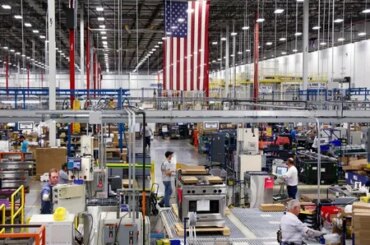In the world of product development, precision and efficiency are paramount. One of the most transformative technologies in this arena is CNC (Computer Numerical Control) prototyping. This process has revolutionised the way products are designed, tested, and brought to market.
Let’s delve into the numerous benefits of CNC prototyping and why it has become an indispensable tool for modern product development.
Precision And Accuracy
One of the most significant advantages of CNC prototyping is its unparalleled precision. Traditional manufacturing methods often leave room for human error, but CNC machines operate based on computer-generated code, ensuring exact specifications and repeatability. This precision is crucial in product development, where even the smallest deviation can impact the functionality and aesthetics of the final product.
For instance, in the aerospace industry, where components must meet stringent safety standards, CNC prototyping ensures that every part is manufactured to the exact dimensions required. This level of accuracy not only enhances product quality but also builds trust with clients and end-users who rely on these products for critical applications.
Speed And Efficiency
Time is a critical factor in product development. The faster a prototype can be created, tested, and refined, the quicker a product can reach the market. CNC prototyping significantly reduces the time required to produce prototypes.
Once the design is finalised in CAD (Computer-Aided Design) software, it can be directly translated into machine instructions for the CNC equipment. This seamless transition from design to production eliminates the lengthy setup times associated with traditional manufacturing methods.
Moreover, CNC machines can operate continuously, 24/7, without the need for breaks. This constant operation means that prototypes can be produced in a fraction of the time it would take using manual machining processes. For companies aiming to stay ahead in competitive markets, this speed is a game-changer.
Cost-Effectiveness
Cost management is a crucial aspect of product development. CNC prototyping offers several cost benefits that make it an attractive option for manufacturers. First, the high precision of CNC machines reduces material wastage. In traditional manufacturing, errors can lead to discarded materials and additional costs. However, CNC machines minimise these errors, ensuring that materials are used efficiently.
Additionally, the speed and efficiency of CNC prototyping mean that fewer resources are required to produce each prototype. Labour costs are reduced since CNC machines require minimal supervision once programmed. This combination of reduced material wastage and lower labour costs results in significant savings, making CNC prototyping a cost-effective solution for companies of all sizes.
Flexibility In Design
CNC prototyping offers unparalleled flexibility when it comes to design. Complex geometries and intricate details that would be challenging or impossible to achieve with traditional methods are easily handled by CNC machines. This flexibility allows designers to push the boundaries of innovation and creativity.
For example, in the automotive industry, CNC prototyping enables the creation of intricate engine components and detailed interior features that enhance both performance and aesthetics. Designers can experiment with different shapes, sizes, and materials without worrying about the limitations of manual machining. This freedom fosters innovation and allows companies to create unique products that stand out in the market.
Rapid Iteration And Testing
Prototyping is an iterative process. Designers create a prototype, test it, gather feedback, and make necessary adjustments before creating a new version. CNC prototyping simplifies this iterative process by allowing rapid production of multiple versions of a prototype. Changes to the design can be quickly implemented in the CAD model and then produced on the CNC machine.
This rapid iteration is particularly beneficial in industries such as consumer electronics, where staying ahead of trends and meeting consumer demands require quick turnaround times. By accelerating the prototyping process, CNC technology enables companies to refine their products more efficiently and bring them to market faster.
Enhanced Quality Control
Quality control is a critical aspect of product development. With CNC prototyping, manufacturers can achieve a high level of consistency and quality across all prototypes. Since the process is automated and computer-controlled, each prototype is produced to the exact same specifications, reducing variability and ensuring uniformity.
Moreover, CNC machines can incorporate advanced features such as in-process inspection and feedback systems. These systems monitor the machining process in real-time, detecting any deviations from the desired specifications and making automatic adjustments. This level of quality control ensures that each prototype meets the highest standards, reducing the risk of defects in the final product.
Real-World Examples
To illustrate the benefits of CNC prototyping, let’s consider a few real-world examples:
1. Medical Devices: In the medical field, precision and reliability are paramount. CNC prototyping has enabled the development of complex medical devices such as implants and surgical instruments. These prototypes can be quickly produced, tested, and refined to ensure they meet stringent medical standards.
2. Consumer Electronics: Companies like Apple and Samsung use CNC prototyping to develop sleek and functional electronic devices. The ability to rapidly iterate and test different designs allows them to innovate continually and maintain a competitive edge in the market.
3. Customised Products: CNC prototyping is also invaluable for producing customised products, from bespoke furniture to personalised jewellery. The flexibility of CNC machines allows manufacturers to cater to individual customer preferences, creating unique and high-quality items.
Manufacturing The Modern World
CNC prototyping has undoubtedly transformed the landscape of product development. Its benefits—precision, speed, cost-effectiveness, design flexibility, rapid iteration, and enhanced quality control—make it an essential tool for modern manufacturers. As technology continues to advance, CNC prototyping will only become more integral to the process of bringing innovative and high-quality products to market.
For companies looking to stay ahead in competitive industries, investing in CNC prototyping is a strategic move that promises significant returns.






